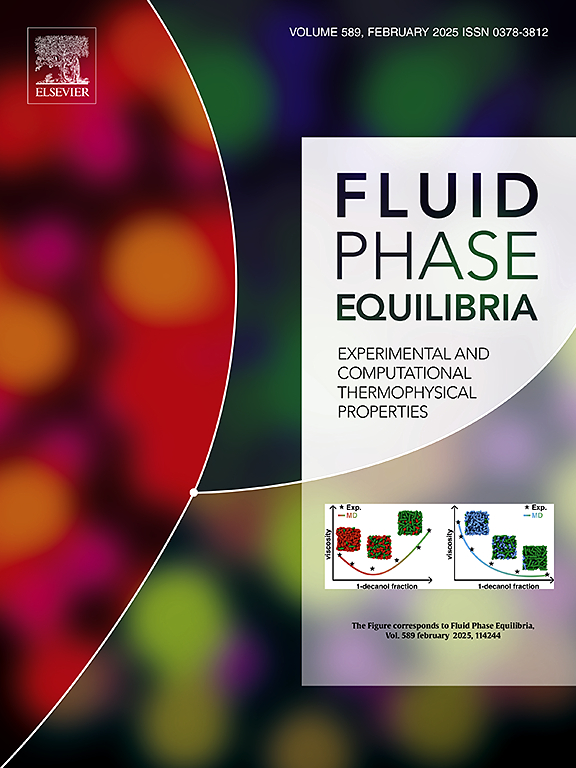Monte Carlo optimization method based QSPR modeling of micelle–water partition coefficient
IF 2.7
3区 工程技术
Q3 CHEMISTRY, PHYSICAL
引用次数: 0
Abstract
This study investigates the development of quantitative structure-property relationship (QSPR) models for predicting micelle-water partition coefficients based on 2D molecular representations that does not require conformational sampling or 3D geometry optimization. The Monte Carlo (MC) optimization method was employed to construct these models, utilizing a combination of SMILES notation descriptors and local molecular graph invariants. The MC method served as the model developer for both training and test sets, analyzing three independent splits of 291 organic compounds with experimentally determined micelle-water partition coefficients obtained from sodium dodecyl sulfate (SDS) solutions. The developed QSPR models were rigorously validated using a battery of statistical parameters, demonstrating excellent predictive ability and robustness. Additionally, the study identified key molecular fragments derived from the SMILES notation descriptors that influence the micelle-water partition coefficient (increase or decrease). Overall, this work underscores the efficacy of the MC optimization method in constructing QSPR models with strong predictive power for micelle-water partition coefficients. These models have the potential to streamline drug discovery by facilitating the identification of drug candidates with targeted micelle-water partitioning behavior.

基于蒙特卡罗优化方法的胶束-水分配系数QSPR建模
本研究探讨了定量结构-性质关系(QSPR)模型的发展,该模型基于二维分子表示来预测胶束-水分配系数,不需要构象采样或三维几何优化。采用蒙特卡罗(MC)优化方法,结合SMILES符号描述符和局部分子图不变量来构建这些模型。MC方法作为训练集和测试集的模型开发器,分析了291种有机化合物的三个独立分裂,实验确定了从十二烷基硫酸钠(SDS)溶液中获得的胶束-水分配系数。开发的QSPR模型使用一组统计参数进行了严格验证,显示出出色的预测能力和稳健性。此外,该研究还确定了影响胶束-水分配系数(增加或减少)的关键分子片段,这些片段来自SMILES符号描述符。总的来说,这项工作强调了MC优化方法在构建具有强大预测能力的胶束-水分配系数QSPR模型方面的有效性。这些模型有可能通过促进具有靶向胶束-水分配行为的候选药物的鉴定来简化药物发现。
本文章由计算机程序翻译,如有差异,请以英文原文为准。
求助全文
约1分钟内获得全文
求助全文
来源期刊

Fluid Phase Equilibria
工程技术-工程:化工
CiteScore
5.30
自引率
15.40%
发文量
223
审稿时长
53 days
期刊介绍:
Fluid Phase Equilibria publishes high-quality papers dealing with experimental, theoretical, and applied research related to equilibrium and transport properties of fluids, solids, and interfaces. Subjects of interest include physical/phase and chemical equilibria; equilibrium and nonequilibrium thermophysical properties; fundamental thermodynamic relations; and stability. The systems central to the journal include pure substances and mixtures of organic and inorganic materials, including polymers, biochemicals, and surfactants with sufficient characterization of composition and purity for the results to be reproduced. Alloys are of interest only when thermodynamic studies are included, purely material studies will not be considered. In all cases, authors are expected to provide physical or chemical interpretations of the results.
Experimental research can include measurements under all conditions of temperature, pressure, and composition, including critical and supercritical. Measurements are to be associated with systems and conditions of fundamental or applied interest, and may not be only a collection of routine data, such as physical property or solubility measurements at limited pressures and temperatures close to ambient, or surfactant studies focussed strictly on micellisation or micelle structure. Papers reporting common data must be accompanied by new physical insights and/or contemporary or new theory or techniques.
 求助内容:
求助内容: 应助结果提醒方式:
应助结果提醒方式:


